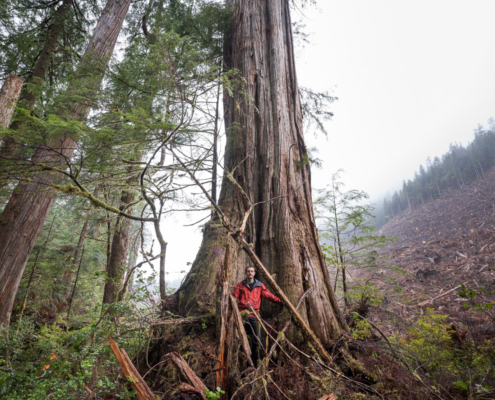
International call for action to save B.C.’s old-growth rainforests
On Oct 25th, we joined Sierra Club BC, local government, and tourism industry representatives outside the BC legislature to deliver the names of more than 185,000 concerned people from around the world to the BC government, all calling on the NDP to save BC's last endangered ancient rainforests. The international call for protection of BC’s old-growth forests is echoed by tens of thousands of British Columbia residents who have already signed petitions launched by the AFA, Sierra Club BC, Wilderness Committee Conservation North, and other groups.

Acclaimed Documentary, Anthropocene: The Human Epoch, Depicts Beauty and Destruction of BC’s Old-Growth Forests
The widely acclaimed documentary film entitled Anthropocene: The Human Epoch by renowned filmmakers Jennifer Baichwal and Nicholas de Pencier and photographer and artist Edward Burtynsky, which premiered last month at the Toronto International Film Festival, highlights the profound impact humanity has had on planet Earth, including the destructive logging of BC’s coastal temperate rainforests.

VIDEO: What Will it Take to Save BC’s Old-Growth Forests?
This film is the final in our series commemorating the 25-year anniversary of the Clayoquot Sound protests and presents an overview of the key issues relating to BC's old-growth forests and the solutions urgently needed to protect them. These solutions, including science-based old-growth protection legislation; policies that ensure sustainable, value-added second-growth forestry; and support for First Nations’ sustainable economic diversification, are entirely possible, but require political will from the NDP government and support from British Columbians from all walks of life.
